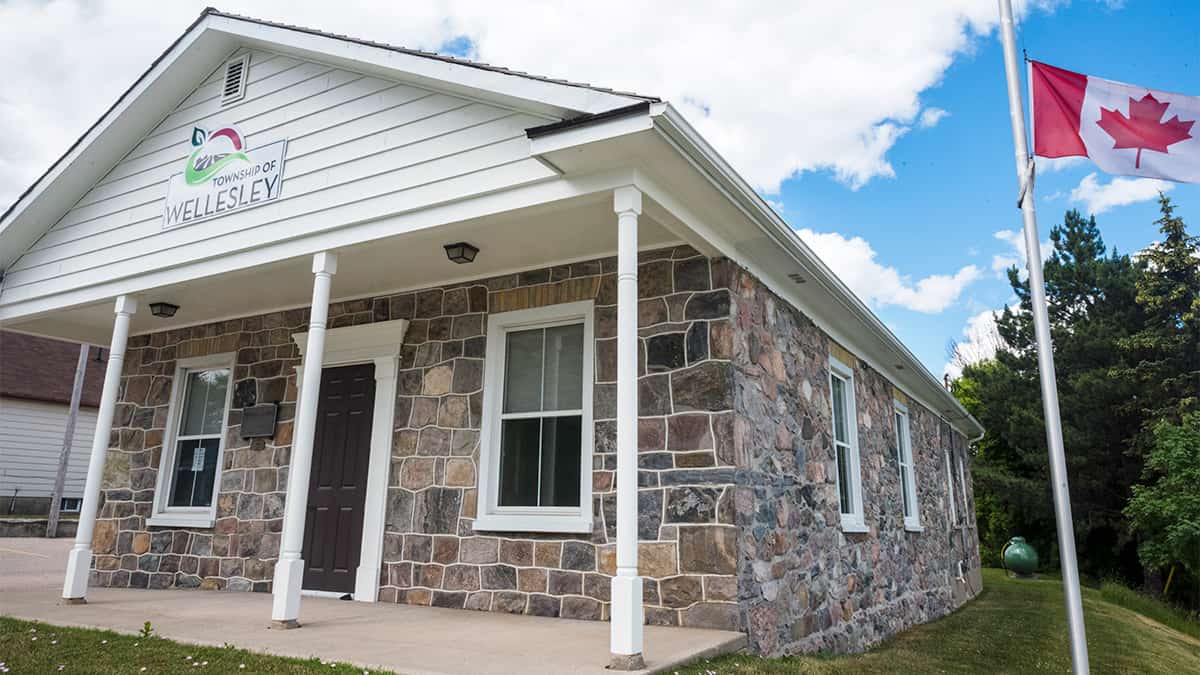Still unconvinced a residential subdivision should be located next to Elmira’s Union Street industrial area, Woolwich councillors want to see more changes to the plan submitted by Hawk Ridge Homes.
Meeting by videoconference Tuesday night, Woolwich councillors opposed a staff recommendation to approve the residential project, calling instead for yet more adjustments that might help ward off future problems, particularly noise related to the late-night shunting of trains.
The proximity to the Lanxess chemical plant and the CCC Sulphur Products facility have been lingering concerns over possible noise and odour issues.
This week’s decision follows a similar council move last fall. Previously, Hawk Ridge Homes had twice been turned down by Woolwich, the region and the Ontario Municipal Board since first pitching the idea for a subdivision at the former apple orchard site on Union Street in 2009. The latest revised plans calls for 12 single-family and 24 semi-detached homes. Currently dead ends, Bauman and College streets would be opened up to Union Street, allowing for north-south lot configurations on the property bounded by First Street to the south.
Noise issues were a major concern this week, as the company’s mitigation plans were found to contain errors in the noise modelling done – specifically, the assumption of a nine-metre berm/fence, a longstanding error that would simply be unworkable. With more accurate numbers, the modelling was unable to mitigate nighttime noise to acceptable levels as outlined by the Ministry of Environment.
Instead, the company is proposing to have the development deemed what is known as a “Class 4” area, a provincial designation that provides more leeway in terms of land use compatibility.
Arlene Beaumont, a planner with W.E. Oughtred & Associates representing the applicant, said the Class 4 designation has been used at some 30 sites since being introduced by the province eight years ago, making it a viable option.
Councillors did not appear to warm to the idea, however, with Coun. Larry Shantz calling it a “get out of jail free” option.
Coun. Patrick Merlihan, too, saw the designation as something of an end-run, saying it did more to help the developer than protect future residents of the subdivision should it go ahead.
“The modelling, I’m not super confident in that actually translating to reality,” he said. “It’s lowering the bar to make it acceptable.”
Beaumont noted that items such as a 2.5-metre fence, air conditioning in all the homes, brick construction and lack of windows facing the rail line are some of the additional noise-mitigation methods Hawk Ridge will employ.
Despite such steps, noise will be a much bigger issue than what the developer is claiming, said CCC Sulphur Products president Ron Koniuch, who noted the facility, also known as Sulco Chemicals, is just 100 metres from the development site, whereas provincial guidelines call for 300 metres.
Noise issues are likely to occur, both from an operational standpoint and from the rail line that serves the plant, he said, calling the bid for a Class 4 designation not mitigation but a way to make things work for the applicant.
“If this does go through, there will be noise complaints – we know that,” said Koniuch, noting that plans to include noise warning on housing titles and via signs in the area won’t stop people from being upset with the reality of train noises at 1 to 3 a.m.
“What we are not happy with is that there is a refusal to deal with the noise issues and that the only resolution to this issue is to inform residents that noise levels will be higher and may cause concern to some residents. Do we really think it an acceptable level of due diligence to just notify people in advance that you will experience rail shunting activities at night while you are sleeping?” he said in an accompanying written submission to council.
Coun. Fred Redekop said the proximity to the industrial area may be too much to overcome.
“I just don’t think the Hawk Ridge development is in the right place.”
At the suggestion of Mayor Sandy Shantz, council recommended the applicant meet again with planning staff to tweak the subdivision proposal yet again to see if an acceptable plan can be developed.









